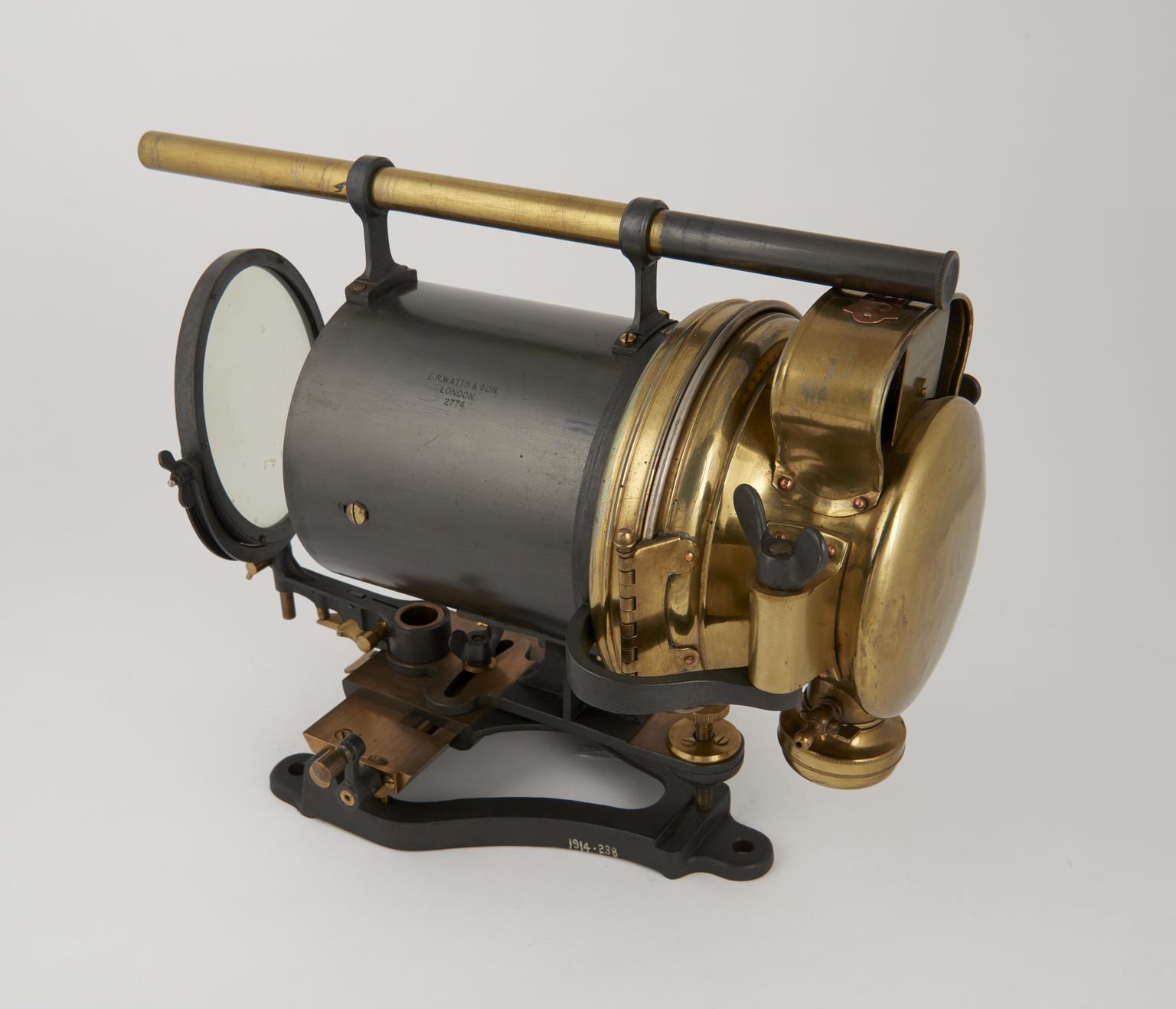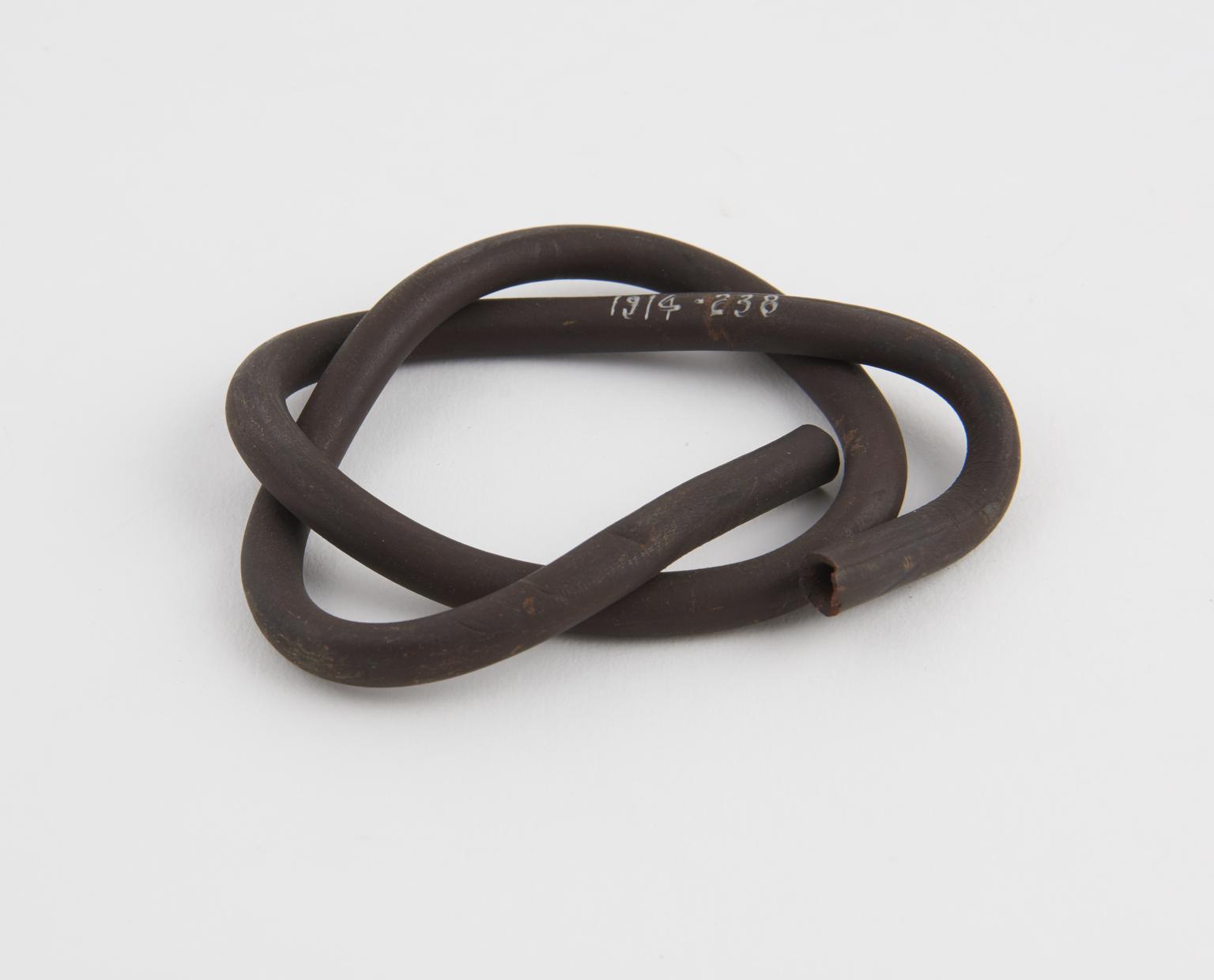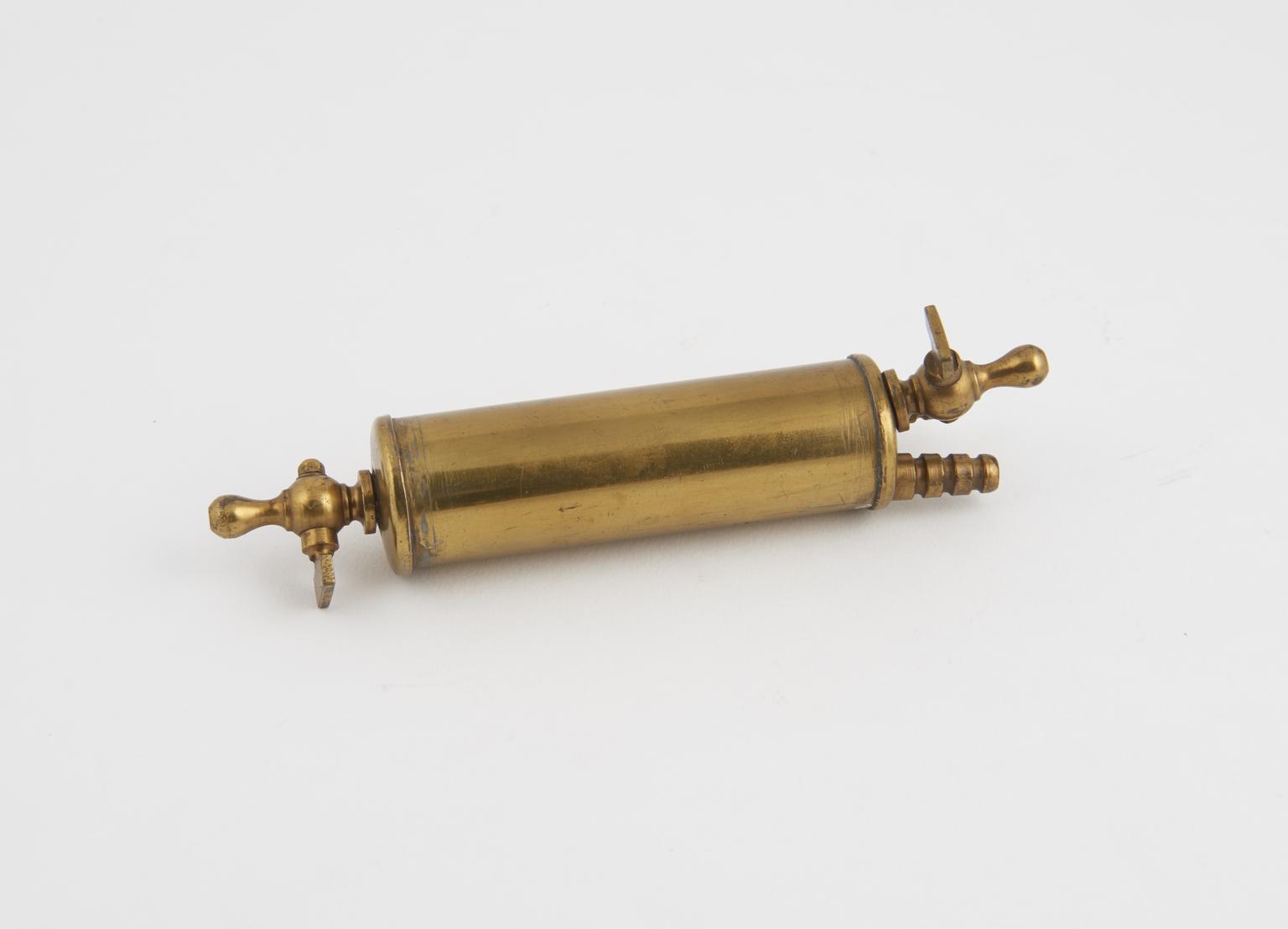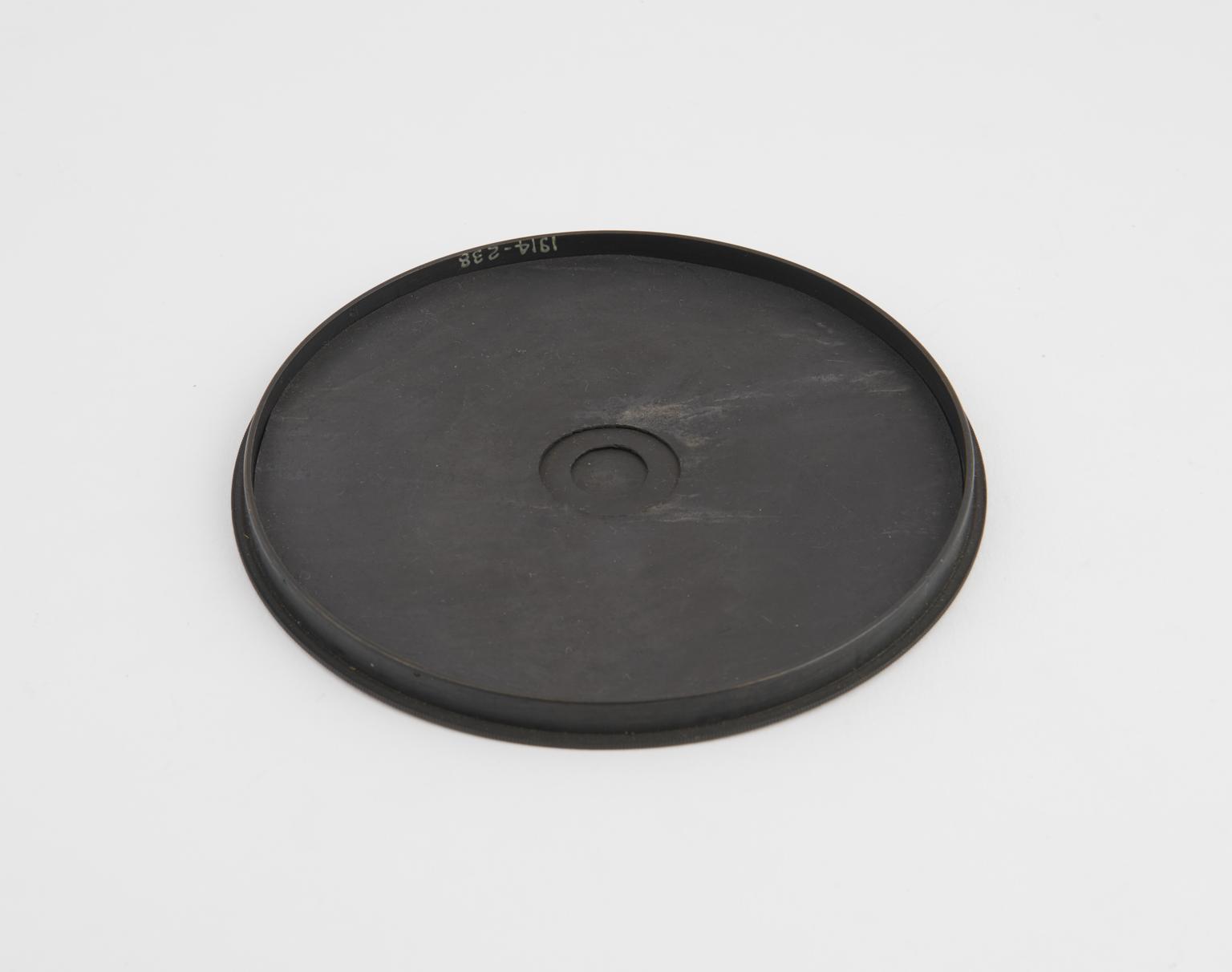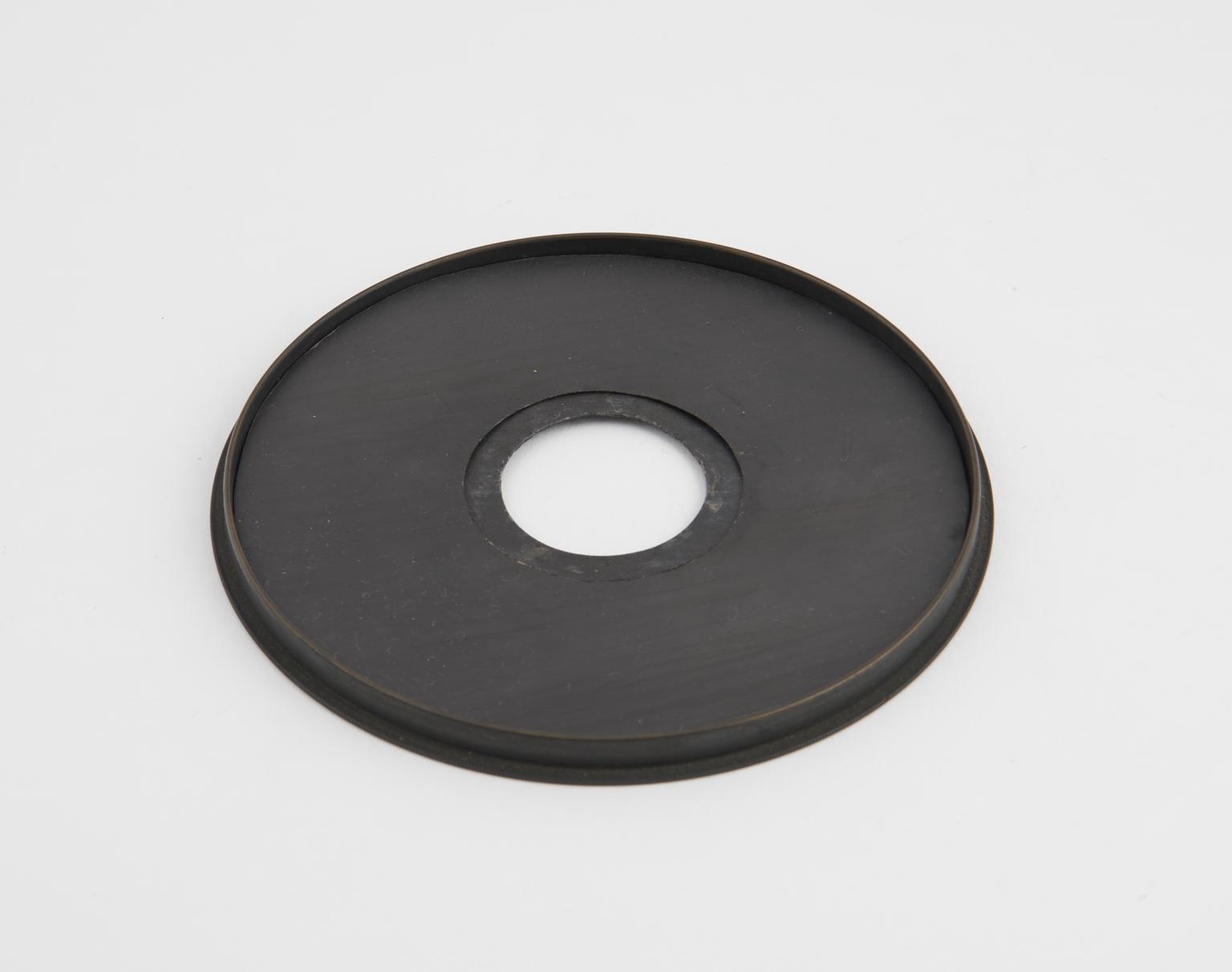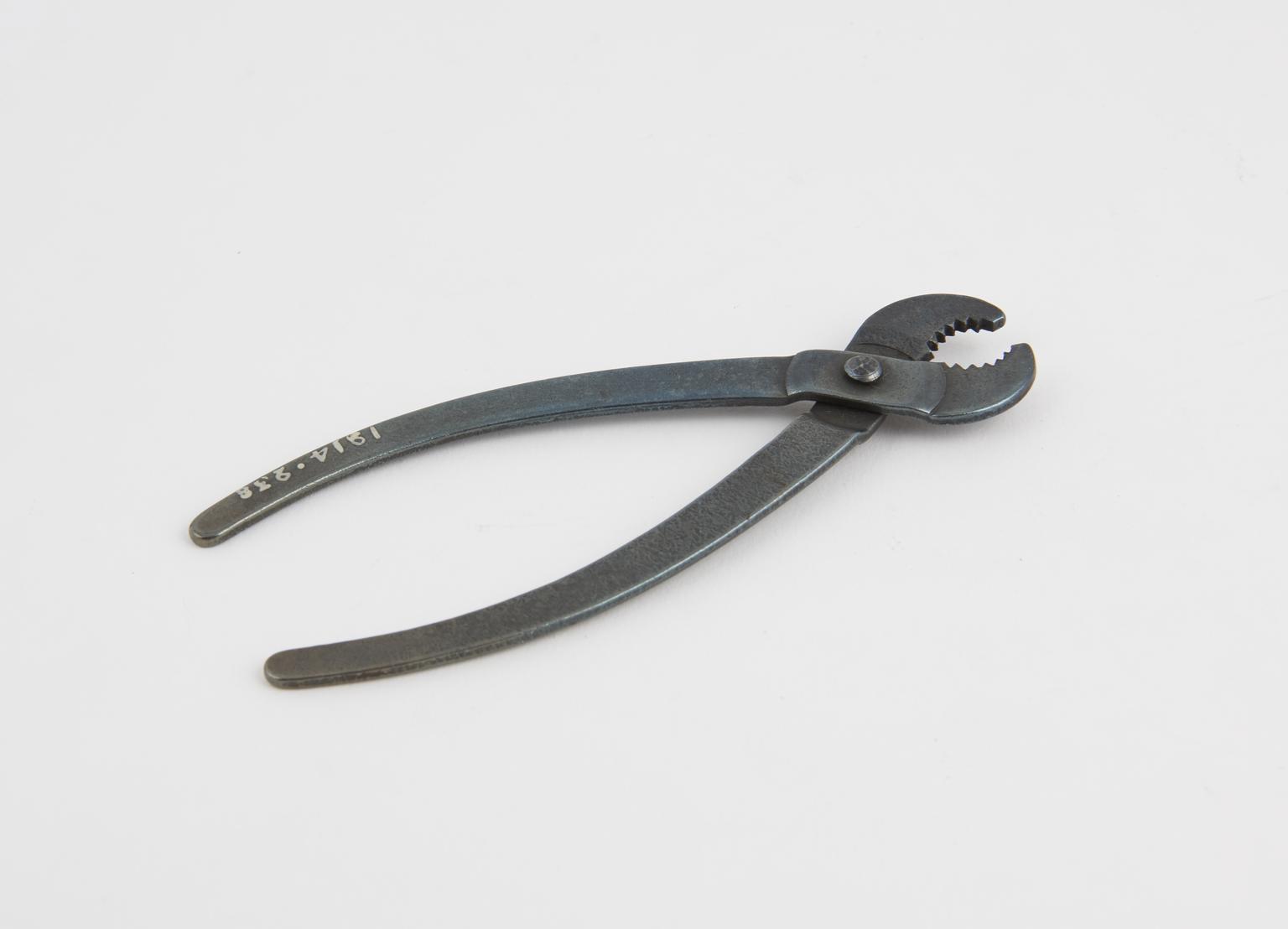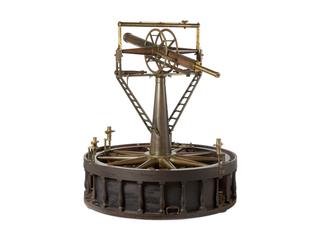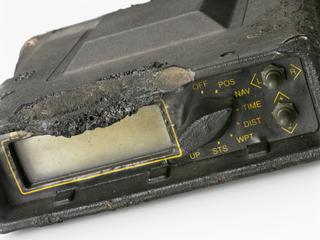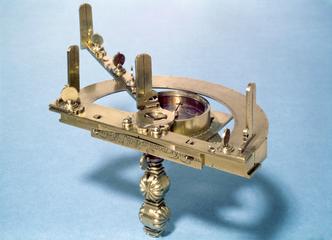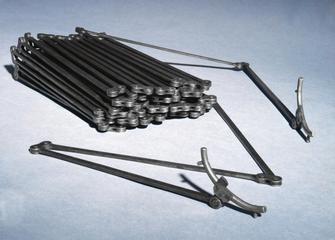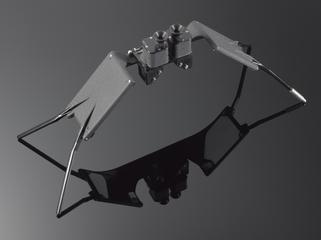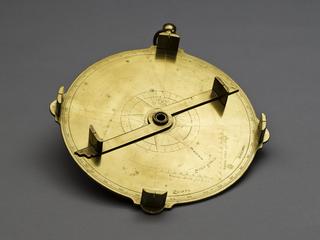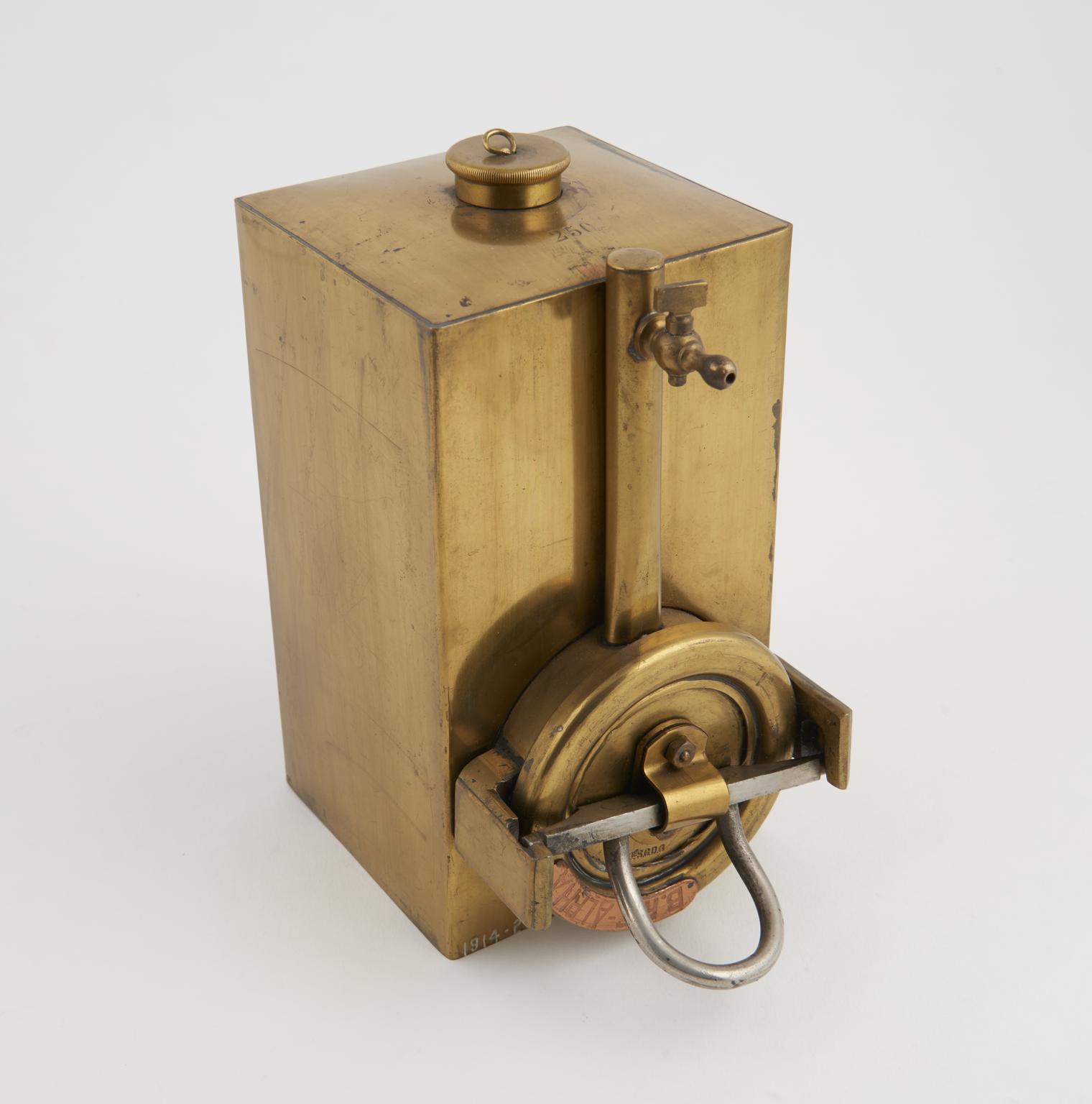
Gas generator from acetylene signal lamp with heliograph attachment used for geodetic surveying in Uganda
Gas generator from acetylene signal lamp, marked with number 250, made by E. R. Watts and Son, London, England, 1907. These lamps were used in the measurement of the arc of meridian in Uganda in 1908–1909 under the Anglo-Belgian Boundary Commission, and later in the Royal Siamese Survey.
More
Acetylene signal lamps were used in some geodetic surveys where it was necessary to take measurements over large distances, or at night. This lamp, which could project a beam in a constant direction towards the distant observer, could be seen from around 30 miles away. Acetylene lamps have a chamber containing calcium carbide, which produces acetylene gas when water is dripped onto it. The gas was transferred to the lamp barrel via a rubber tube and burned, creating an open flame, the light from which was projected by the lamp. This lamp also has a heliotrope mirror for daytime use. This would have been arranged in front of the lens and made to reflect a beam of sunlight through an aperture aligned with the distant station.
The Anglo-Belgian Boundary Commission was established to determine the position of the 30th meridian between Uganda and Belgian Congo, in order to resolve a boundary dispute between Britain and Belgium, both colonial powers in central Africa. The survey was funded in part by contributions from the Royal Society, Royal Geographical Society, Royal Astronomical Society, and British Association.
This lamp was designed by McCaw, who was the assistant observer on the survey. The design reflects the disparaging attitudes of British surveyors towards local surveyors and assistants, upon whose labour and expertise they depended to carry out the surveying work in challenging and mountainous terrain. The heliotrope mirror, for daytime use, was an adaptation considered by the British to be less confusing for its users than the arrangement of mirrors in a self-contained heliograph.










